Whichever way you paint it, alcohol consumption in the UK is falling. The British Beer and Pub Association placed the drop in consumption at 18% since the peak of 2004 in its September 2016 numbers. Also in 2016, 56.9% of respondents surveyed by the Office of National Statistics had drank alcohol in the week before being interviewed for their Opinions and Lifestyle Survey, the lowest level seen since the organisation’s series began in 2005. And in May 2017, 20.9% of those interviewed by the ONS said that they do not drink alcohol.
More than ever, people are paying more attention to the impact their diet has on their wellbeing. We’re also seeing people drink less but a better quality product when they do. However, it’s hard to recall a time in recent memory when beer was more en vogue than it is now. The desire not to consume three, four, five pints at the local pub or bar doesn’t correlate with wanting to avoid beer full-stop.
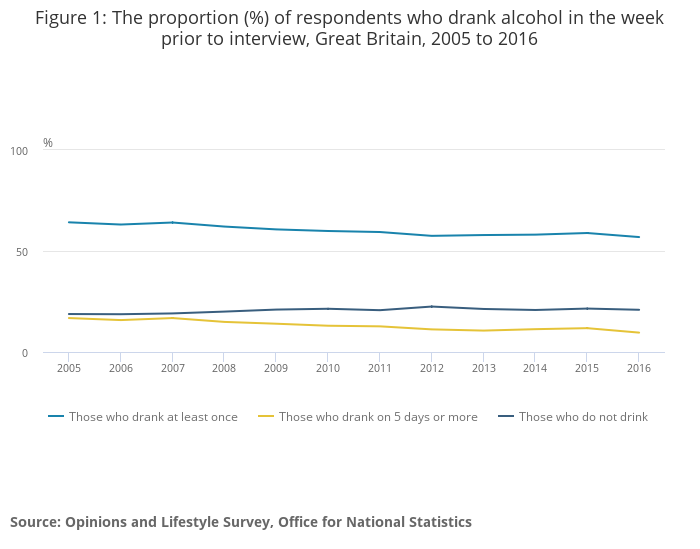
And we’re reaching a point where the tired stereotype of those that don’t drink are behind us. Those drinking Becks Blue, Kaliber or Erdinger Alcohol-Free were previously either assumed to be A) Driving B) Pregnant or C) Emerging from alcohol addiction.
But no longer. People are choosing low- and no-alcohol beers by choice.
Drinks such as Budweiser Prohibition Alcohol-Free, San Miguel 0.0% and Heineken 0.0 have adorned cover wraps of publications like The Metro and Evening Standard newspapers, as well as Time Out magazine in recent months. Sure the timing around ‘Dry January’ was no coincidence but the multinationals are no doubt preparing to double-down on this sector, playing the long-game in the process, to ensure they their piece of the pie.
That shouldn’t come as a surprise when you realise how much room for growth there is in the low- and no-alcohol sector within the UK. Sales in the sector account for 0.5% in the UK. That may be a bit more, or a bit less, than expected depending on who you ask. But look to the Netherlands (3%), Austria (4%), France (1%) and Spain with an impressive 13% and we are playing catch-up.
According to Nielsen figures from October 2017, off-trade total sales of low- and no-alcohol drinks in the beer and wine arena were valued at £73.1m, up from £66.5m the year previous. More pertinently, in that time, beer’s contribution to those figures shot up from £5.6 m to £35.5m.
“You can’t shy away from the statistics on alcohol consumption,” explains Nick Corden, head of retail marketing at Fuller’s. “I look at the data from our pubs and have no doubt that there is a growing appetite for low- and no-alcohol beers. It’s growing from a very low base but it’s moving on an upward tracectory.”
Corden says Fuller’s dipped its toes into the lower side of ABV last year with the roll-out of its 2.7% Table Beer, and intends to push the beer again more confidently in 2018. But it’s the truly low- and no-alcohol range where he expects to see most growth.
“We’ve recently listed Heineken 0.0 and want to do more to communicate the availability of such a beer in our pubs. It had a strong trial last year so that’s something we’ll continue to work on. We also partner with BrewDog to sell its 0.5% Nanny state beer in lots of our pubs, too.” he adds.
Although Fuller’s is working with larger breweries on the latest additions to its beers in this range, Corden stressed that the business would explore stocking beers from the wider brewing landscape, just as they have in recent months and years in an increasing number of its pubs.
“The low- and no-alcohol sector is something that matters and we would be negligent to not pay it the attention it deserves,” he explains. “But for a successful beer in that space, it needs to have the balance of flavour with the lower level or absence of alcohol. And smaller, independent breweries have as much of a chance as anyone to take the lead in that space because it won’t be long before those beers become the norm on tap in our pubs and bars.”
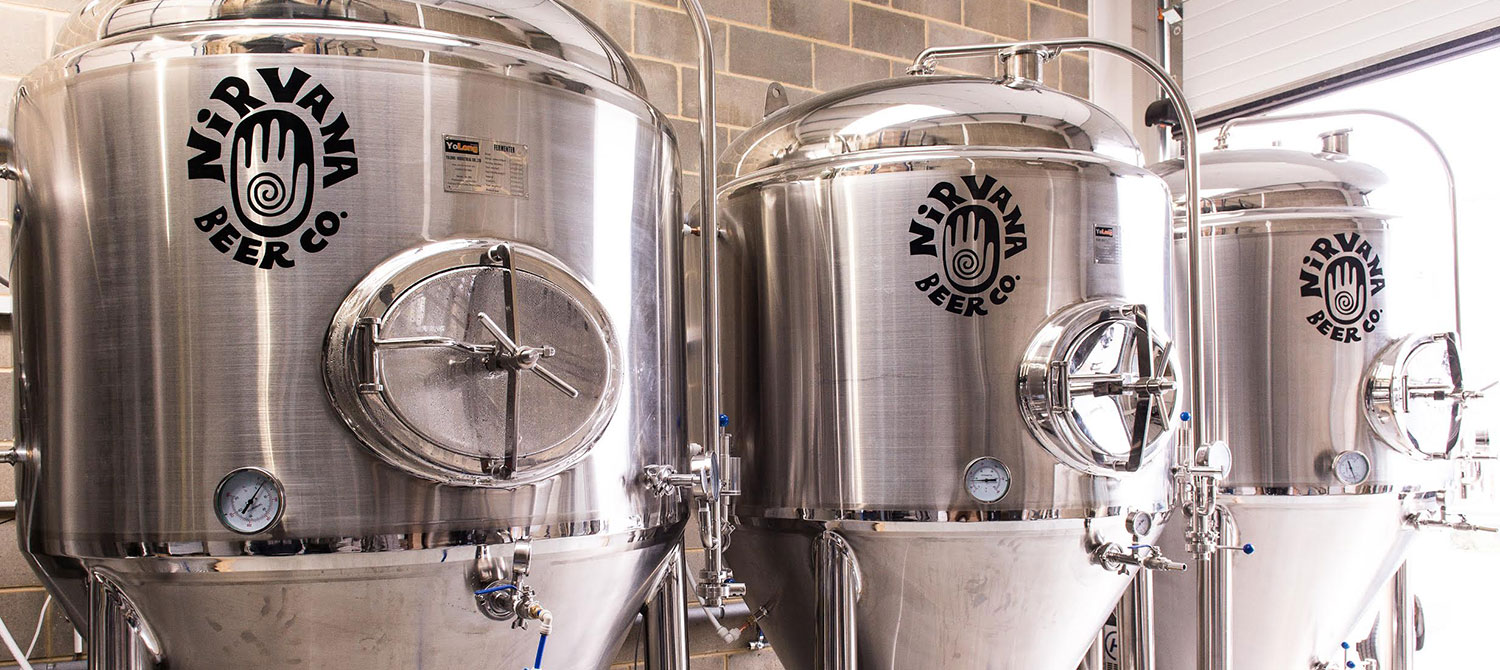
And in the UK, just as the number of brewery’s opening continues to rise, so does the number of breweries turning their hand to producing low- and no-alcohol beers. Some businesses have set out focus exclusively on the field.
“We’ve been trading for eight months but it’s a story more than two years in the making,” says Steve Dass, founder of Nirvana Brewery in East London.
The brewery, as Dass explains, can’t afford to utilise reverse osmosis or vacuum distillation so instead works with a low grain recipe approach, reducing the amount of fermentables as a result.
“We’re definitely doing it the hard way,” he laughs. “There was a lot of beer down the drain in the early days. But that’s par for the course when you’re experimenting with a lot of variables. You need to get things right. It’s one thing putting out an average beer but it’s a whole different ballgame when it comes to ABV. It’s a specialist industry and if it was so straight forward, everyone would be doing it.”
He adds: “For us, if we can make our product taste 99% like beer you’re used to then we’ve achieved something. It’s down to using a nice mix of malts and hops but no flavourings, no chemicals and no lactose.
“We’re all vegans here at Nirvana so our recipes tie in to our idea of a holistic lifestyle approach. People are increasingly cautious about what they’re putting in their bodies. It started with food and it’s happening in drink, too.”
Dass, however, points out that the “health-conscious” crowd only accounts for around 20% of its market.
“People want a beer during the day and might not want the higher ABV associated with that. Or they might want a break during a session involving stronger beers. We’ve moved away from the stereotypes where the only person drinking such beers is the designated driver or if they’re pregnant,” he adds.
Nirvana Brewery started out with its alcohol-free Kosmic stout and its alcohol-free Tantra pale ale before the addition of its 0.5% Sutra IPA and 0.5% Karma pale ale. Most recently, Nirvana moved up to 1% with its Chakra, the highest strength beer it plans to produce.
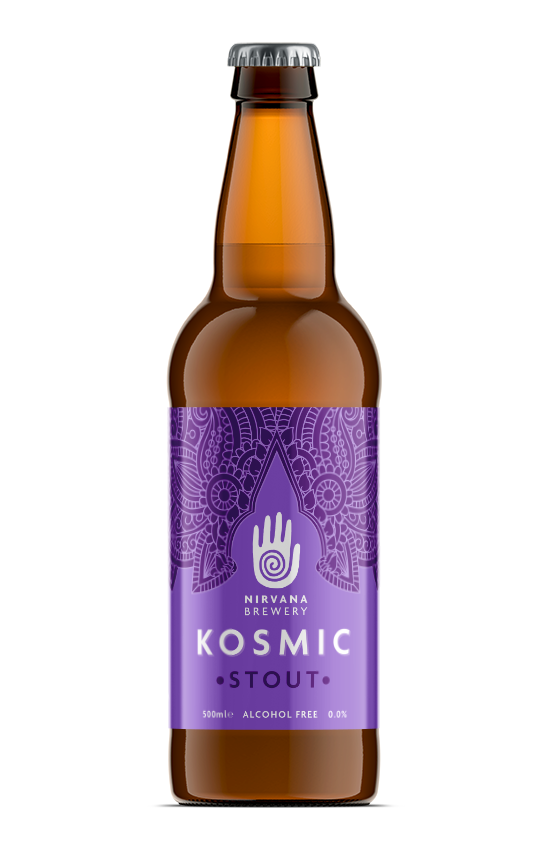 Dass agrees with Fuller’s’ Corden, that we’re not too far away from seeing pubs and bars move low- and no-alcohol beers from the fridges and on to the taps.
Dass agrees with Fuller’s’ Corden, that we’re not too far away from seeing pubs and bars move low- and no-alcohol beers from the fridges and on to the taps.
“I can see it happening sooner rather than later. A lot of it comes down to branding and the perception of those beers and that is changing. You can now walk into a bottle shop and have a beer of our ilk sit alongside beers with stronger ABVs. That means we’re doing something right because we don’t want to plaster ‘No Alcohol’ as the prominent detail on our labels. We want a broad appeal and like the wider beer community, it’s a case of educating the consumer on the options available to them.”
One such bottle shop that stocks low- and no-alcohol beers alongside its standard range is The Beer Boutique in Putney.
Monique Hinton, manager of the Putney store, explains: “We’ve seen sales of alcohol free or low alcohol beer increase substantially in the last six months. In January especially being a normally quiet month, post Christmas, there was no shortage of people seeking an alcohol-free alternative to their favourite beers.
“We are also seeing many people in the community surrounding our store that are turning to a more health-conscious lifestyle, while still loving their beer, alcohol free beers give them an alternative to abstaining completely.”
She adds: “I would personally love to see alcohol-free beers being canned, there is such a high demand for canned beers in the market, I think if we start to see them in cans, people will be more inclined to purchase, and as always, branding is key!”
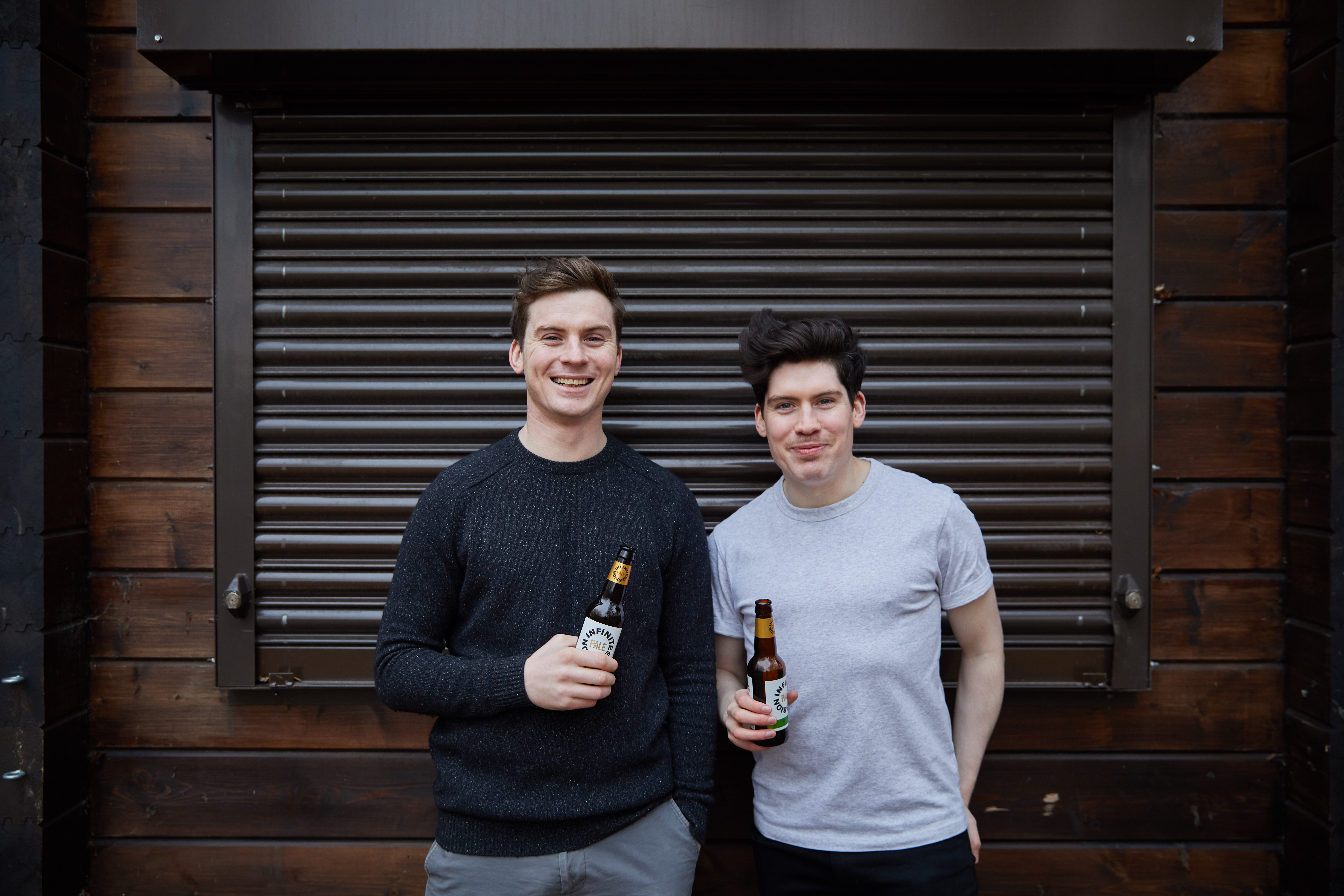 Branding will play a big part in the offering from Infinite Session, a new business co-founded by Chris and Tom Hannaway, that launched at Craft Beer Rising in London during February.
Branding will play a big part in the offering from Infinite Session, a new business co-founded by Chris and Tom Hannaway, that launched at Craft Beer Rising in London during February.
The brothers have lived in London for the last five years and become accustomed to the wealth of excellent beer available from breweries, bars and bottle-shops. But their passion for playing Sunday League Football would sometimes mean the two were incompatible if a big Saturday night out was in order.
“We wanted to find ways we could still go out the next day without being hungover, or to be able to enjoy beer during the week and crack on without feeling horrendous,” explains Chris Hannaway. “And having travelled to other countries, we found some alcohol-free beers had certain qualities but not others. So German ones would often have a good body while others had a more prominent hop profile. We thought we could learn from this and make one that was the best of both worlds.”
2017 involved in-depth research in the US and Germany pouring over papers and journals in places such as Weihenstephan to refine the type of beer they wanted to create.
The duo are now partnering with London-based Sambrook’s on its contract brewing operation to produce a 0.5% American Pale Ale. The beer’s body is created with Pale, Caramalt, Munich, Amber, Wheat, Oats. These are complemented by Ekuanot, Citra, Mosaic, Centennial, Galena hops.
“Early on we knew whatever style we went for, we could see wheat playing an important role. In a no-alcohol beer, that could add the body many lack while oats provide creaminess and a head. Aesthetically that gives you that ‘beer experience’ others often don’t,” says Tom Hannaway.
Getting low- and no-alcohol beers on draught in as many pubs as possible is a major goal for the Hannaway brothers but the duo acknowledge it’s a long-term vision.
“When it comes to a round, opting for a beer on draught can often make people feel a greater part of the conversation and we want to champion that,” says Chris. “Stocking a bottle or a can, can frequently be a box-ticking exercise. It’s a long-term challenge and it won’t change overnight but there is an undercurrent and a momentum in this sector.”
He adds: “People are becoming more open-minded. Craft Beer Rising showed us that drinkers want more from their beer. Sure, we had people that were welcoming to the idea but you also had those that rolled their eyes when they saw what we were offering. But the most rewarding thing was seeing their perception change once they tasted the beer.
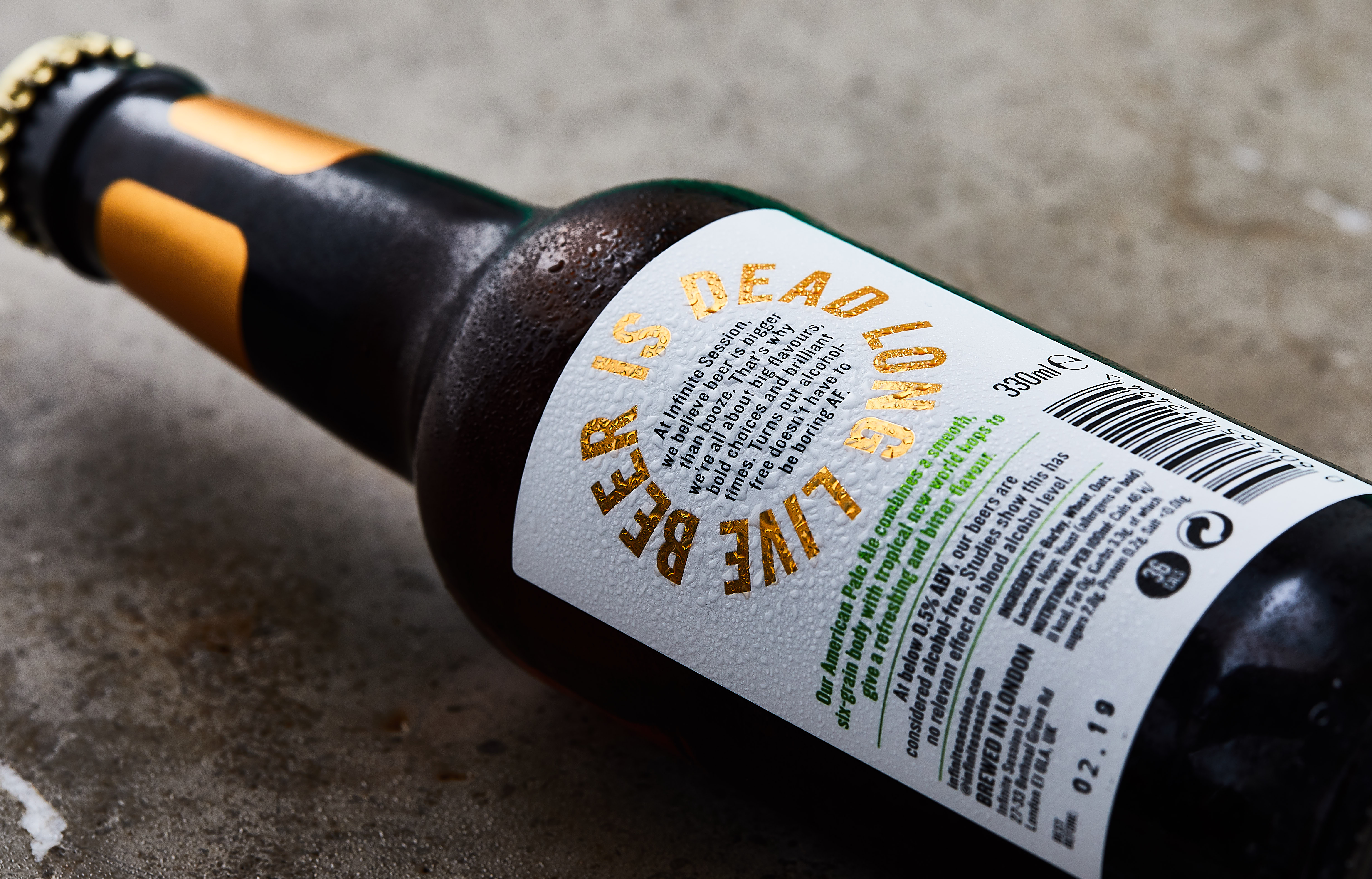
“And those people were the ones that came back time and time again throughout the evening.”
For Steve Dass at Nirvana, which is the only bricks and mortar business brewery producing low- and no-alcohol beers, increased competition is an inevitability but one he welcomes.
“There is something like 130 breweries in London in 2018. If they can all successfully trade together then why can’t the same apply to a few breweries producing beers like we are?” he asks.
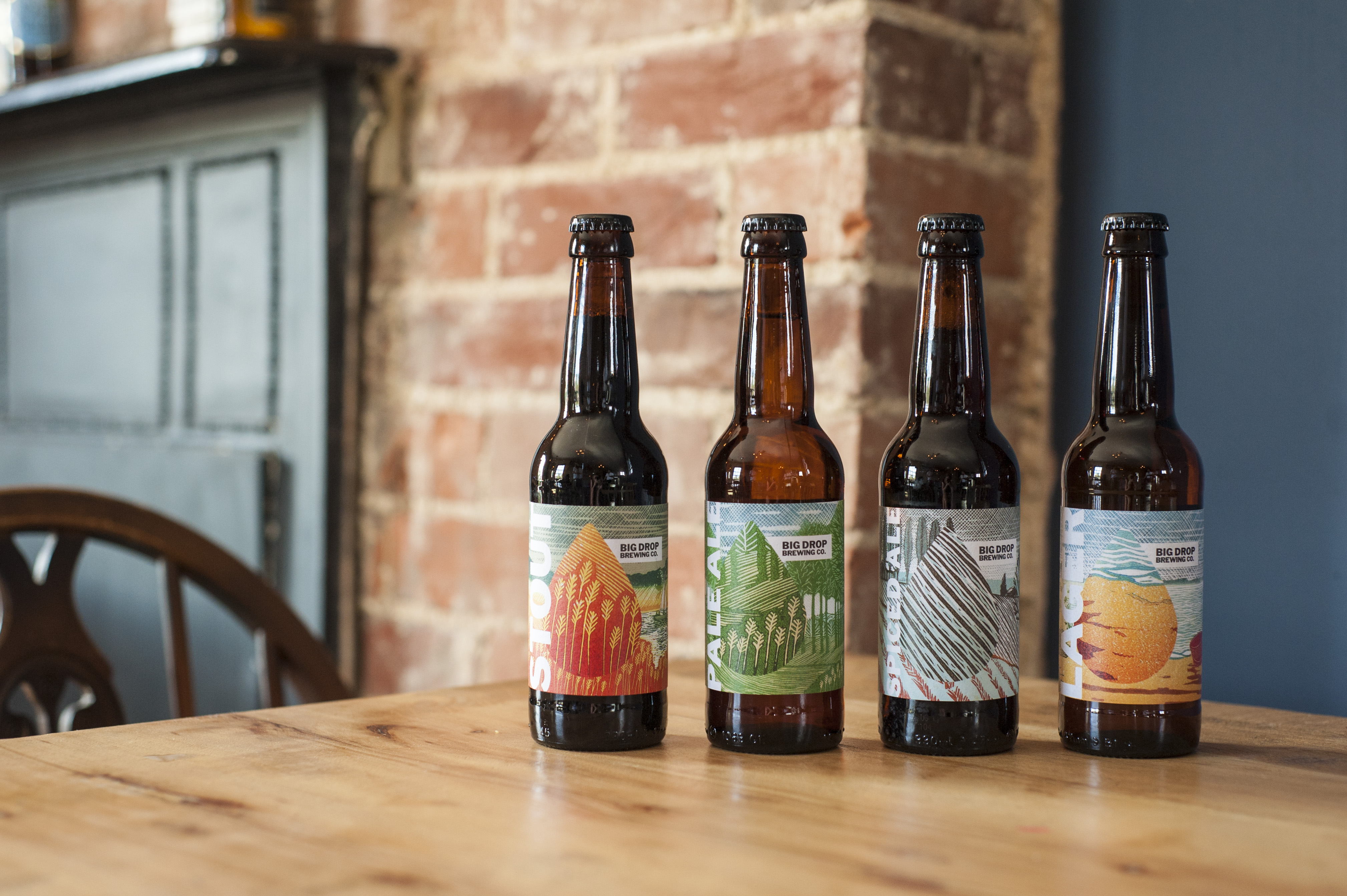
It’s a sentiment shared by Rob Fink, who established Big Drop, a brewing business that solely produces beers at 0.5% or below, in April 2016.
“It is the way forward now. The more people that talk about it, the better. If it was just me, they’d think I was a nutter and I have no doubt there will be other breweries that set up with the same focus,” he adds. “And increasingly the bigger breweries will do that too. There is a move in that direction and even though we represent a small part of the beer market, it’s one that’s growing all the time.”
Fink explains he has no problem drinking high ABV beers but that people are becoming more conscious about what they are drinking and eating.
“We’re drinking less but better. A lot of people are saying it but it’s true,” he explains.
Fink, who was previously a lawyer in The City of London, says he’d increasingly see people in pubs and bars at lunchtime but opting for a soft drink or a tea/coffee rather an a beer.
“People end up being constrained by the choices offered to them. They’d like a quality beer low in alcohol but too often that would not exist and I was certain I wasn’t the only one finding that lack of quality on offer,” he adds. “For us, the whole point is to give people an alternative.
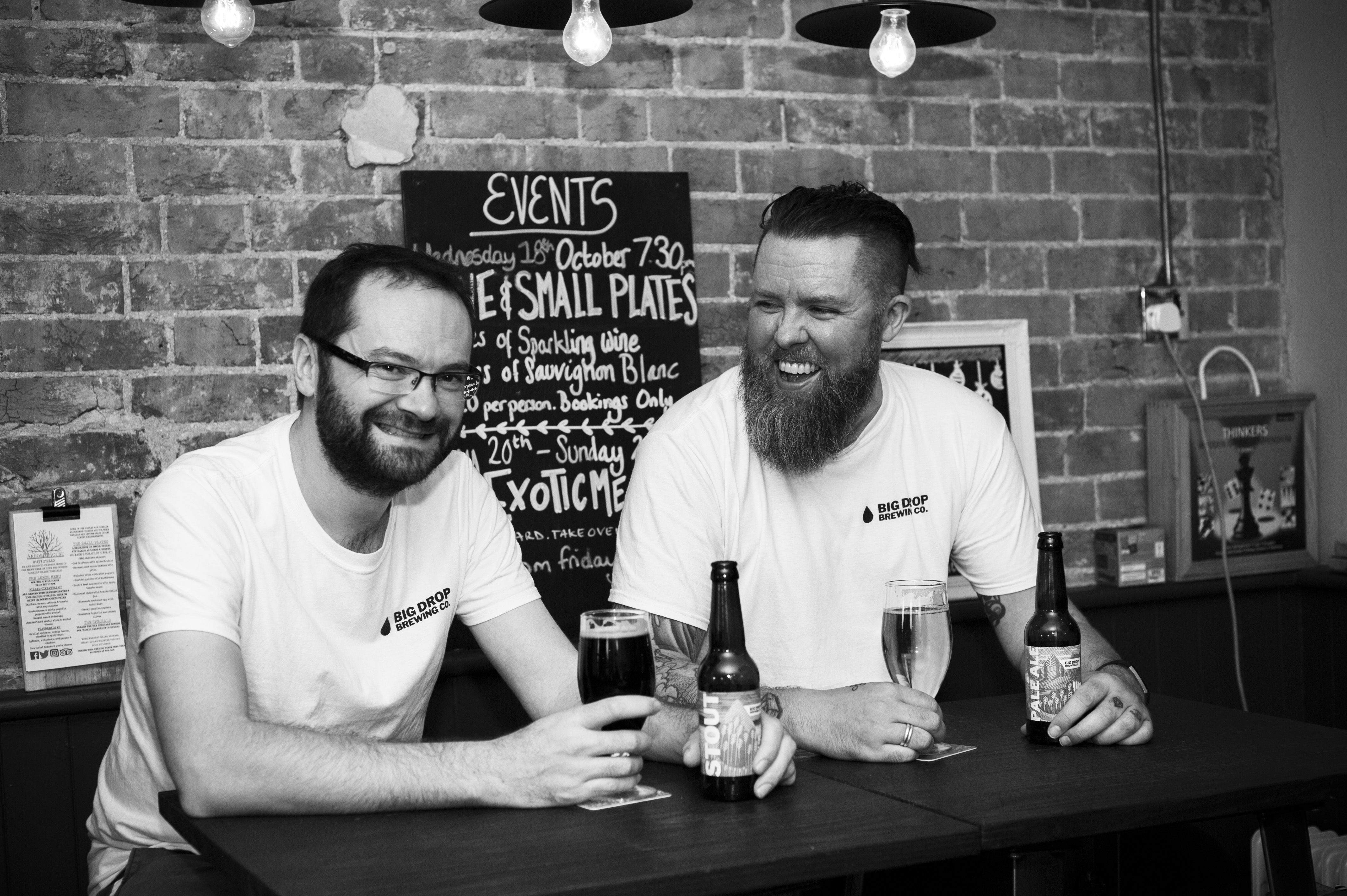
Big Drop’s offering comprises four beers: A Stout, Pale Ale, Lager and a Spiced Ale. Like the Hannaway brothers at Infinite Session, Fink says flavour and education are among the biggest challenges when it comes to low- and no-alcohol beers.
It’s a case of persuading people that you can produce beers with flavour, educating them of the options available,” he says. “You don’t drink our beers and think you’re drinking an 8% stout but you can put our pale against ones around 3.5% and there isn’t much in it. We have been able to show people that it is possible.”
He adds: “For me, we will have crossed the rubicon when a decent sized pub co put such beers on a keg line. Put it on a keg line, shout about it and look every customer in the eye once they have had one and ask if they wouldn’t have another.”
The Hannaways agree: “We don’t want to be apologetic for being alcohol free. We want to champion it and it should be a celebration because beer is bigger than booze.”
When beer is bigger than booze | The growth of low and no-alcohol beers
Whichever way you paint it, alcohol consumption in the UK is falling. The British Beer and Pub Association placed the drop in consumption at 18% since the peak of 2004 in its September 2016 numbers. Also in 2016, 56.9% of respondents surveyed by the Office of National Statistics had drank alcohol in the week before being interviewed for their Opinions and Lifestyle Survey, the lowest level seen since the organisation’s series began in 2005. And in May 2017, 20.9% of those interviewed by the ONS said that they do not drink alcohol.
More than ever, people are paying more attention to the impact their diet has on their wellbeing. We’re also seeing people drink less but a better quality product when they do. However, it’s hard to recall a time in recent memory when beer was more en vogue than it is now. The desire not to consume three, four, five pints at the local pub or bar doesn’t correlate with wanting to avoid beer full-stop.
And we’re reaching a point where the tired stereotype of those that don’t drink are behind us. Those drinking Becks Blue, Kaliber or Erdinger Alcohol-Free were previously either assumed to be A) Driving B) Pregnant or C) Emerging from alcohol addiction.
But no longer. People are choosing low- and no-alcohol beers by choice.
Drinks such as Budweiser Prohibition Alcohol-Free, San Miguel 0.0% and Heineken 0.0 have adorned cover wraps of publications like The Metro and Evening Standard newspapers, as well as Time Out magazine in recent months. Sure the timing around ‘Dry January’ was no coincidence but the multinationals are no doubt preparing to double-down on this sector, playing the long-game in the process, to ensure they their piece of the pie.
That shouldn’t come as a surprise when you realise how much room for growth there is in the low- and no-alcohol sector within the UK. Sales in the sector account for 0.5% in the UK. That may be a bit more, or a bit less, than expected depending on who you ask. But look to the Netherlands (3%), Austria (4%), France (1%) and Spain with an impressive 13% and we are playing catch-up.
According to Nielsen figures from October 2017, off-trade total sales of low- and no-alcohol drinks in the beer and wine arena were valued at £73.1m, up from £66.5m the year previous. More pertinently, in that time, beer’s contribution to those figures shot up from £5.6 m to £35.5m.
“You can’t shy away from the statistics on alcohol consumption,” explains Nick Corden, head of retail marketing at Fuller’s. “I look at the data from our pubs and have no doubt that there is a growing appetite for low- and no-alcohol beers. It’s growing from a very low base but it’s moving on an upward tracectory.”
Corden says Fuller’s dipped its toes into the lower side of ABV last year with the roll-out of its 2.7% Table Beer, and intends to push the beer again more confidently in 2018. But it’s the truly low- and no-alcohol range where he expects to see most growth.
“We’ve recently listed Heineken 0.0 and want to do more to communicate the availability of such a beer in our pubs. It had a strong trial last year so that’s something we’ll continue to work on. We also partner with BrewDog to sell its 0.5% Nanny state beer in lots of our pubs, too.” he adds.
Although Fuller’s is working with larger breweries on the latest additions to its beers in this range, Corden stressed that the business would explore stocking beers from the wider brewing landscape, just as they have in recent months and years in an increasing number of its pubs.
“The low- and no-alcohol sector is something that matters and we would be negligent to not pay it the attention it deserves,” he explains. “But for a successful beer in that space, it needs to have the balance of flavour with the lower level or absence of alcohol. And smaller, independent breweries have as much of a chance as anyone to take the lead in that space because it won’t be long before those beers become the norm on tap in our pubs and bars.”
And in the UK, just as the number of brewery’s opening continues to rise, so does the number of breweries turning their hand to producing low- and no-alcohol beers. Some businesses have set out focus exclusively on the field.
“We’ve been trading for eight months but it’s a story more than two years in the making,” says Steve Dass, founder of Nirvana Brewery in East London.
The brewery, as Dass explains, can’t afford to utilise reverse osmosis or vacuum distillation so instead works with a low grain recipe approach, reducing the amount of fermentables as a result.
“We’re definitely doing it the hard way,” he laughs. “There was a lot of beer down the drain in the early days. But that’s par for the course when you’re experimenting with a lot of variables. You need to get things right. It’s one thing putting out an average beer but it’s a whole different ballgame when it comes to ABV. It’s a specialist industry and if it was so straight forward, everyone would be doing it.”
He adds: “For us, if we can make our product taste 99% like beer you’re used to then we’ve achieved something. It’s down to using a nice mix of malts and hops but no flavourings, no chemicals and no lactose.
“We’re all vegans here at Nirvana so our recipes tie in to our idea of a holistic lifestyle approach. People are increasingly cautious about what they’re putting in their bodies. It started with food and it’s happening in drink, too.”
Dass, however, points out that the “health-conscious” crowd only accounts for around 20% of its market.
“People want a beer during the day and might not want the higher ABV associated with that. Or they might want a break during a session involving stronger beers. We’ve moved away from the stereotypes where the only person drinking such beers is the designated driver or if they’re pregnant,” he adds.
Nirvana Brewery started out with its alcohol-free Kosmic stout and its alcohol-free Tantra pale ale before the addition of its 0.5% Sutra IPA and 0.5% Karma pale ale. Most recently, Nirvana moved up to 1% with its Chakra, the highest strength beer it plans to produce.
“I can see it happening sooner rather than later. A lot of it comes down to branding and the perception of those beers and that is changing. You can now walk into a bottle shop and have a beer of our ilk sit alongside beers with stronger ABVs. That means we’re doing something right because we don’t want to plaster ‘No Alcohol’ as the prominent detail on our labels. We want a broad appeal and like the wider beer community, it’s a case of educating the consumer on the options available to them.”
One such bottle shop that stocks low- and no-alcohol beers alongside its standard range is The Beer Boutique in Putney.
Monique Hinton, manager of the Putney store, explains: “We’ve seen sales of alcohol free or low alcohol beer increase substantially in the last six months. In January especially being a normally quiet month, post Christmas, there was no shortage of people seeking an alcohol-free alternative to their favourite beers.
“We are also seeing many people in the community surrounding our store that are turning to a more health-conscious lifestyle, while still loving their beer, alcohol free beers give them an alternative to abstaining completely.”
She adds: “I would personally love to see alcohol-free beers being canned, there is such a high demand for canned beers in the market, I think if we start to see them in cans, people will be more inclined to purchase, and as always, branding is key!”
The brothers have lived in London for the last five years and become accustomed to the wealth of excellent beer available from breweries, bars and bottle-shops. But their passion for playing Sunday League Football would sometimes mean the two were incompatible if a big Saturday night out was in order.
“We wanted to find ways we could still go out the next day without being hungover, or to be able to enjoy beer during the week and crack on without feeling horrendous,” explains Chris Hannaway. “And having travelled to other countries, we found some alcohol-free beers had certain qualities but not others. So German ones would often have a good body while others had a more prominent hop profile. We thought we could learn from this and make one that was the best of both worlds.”
2017 involved in-depth research in the US and Germany pouring over papers and journals in places such as Weihenstephan to refine the type of beer they wanted to create.
The duo are now partnering with London-based Sambrook’s on its contract brewing operation to produce a 0.5% American Pale Ale. The beer’s body is created with Pale, Caramalt, Munich, Amber, Wheat, Oats. These are complemented by Ekuanot, Citra, Mosaic, Centennial, Galena hops.
“Early on we knew whatever style we went for, we could see wheat playing an important role. In a no-alcohol beer, that could add the body many lack while oats provide creaminess and a head. Aesthetically that gives you that ‘beer experience’ others often don’t,” says Tom Hannaway.
Getting low- and no-alcohol beers on draught in as many pubs as possible is a major goal for the Hannaway brothers but the duo acknowledge it’s a long-term vision.
“When it comes to a round, opting for a beer on draught can often make people feel a greater part of the conversation and we want to champion that,” says Chris. “Stocking a bottle or a can, can frequently be a box-ticking exercise. It’s a long-term challenge and it won’t change overnight but there is an undercurrent and a momentum in this sector.”
He adds: “People are becoming more open-minded. Craft Beer Rising showed us that drinkers want more from their beer. Sure, we had people that were welcoming to the idea but you also had those that rolled their eyes when they saw what we were offering. But the most rewarding thing was seeing their perception change once they tasted the beer.
“And those people were the ones that came back time and time again throughout the evening.”
For Steve Dass at Nirvana, which is the only bricks and mortar business brewery producing low- and no-alcohol beers, increased competition is an inevitability but one he welcomes.
“There is something like 130 breweries in London in 2018. If they can all successfully trade together then why can’t the same apply to a few breweries producing beers like we are?” he asks.
It’s a sentiment shared by Rob Fink, who established Big Drop, a brewing business that solely produces beers at 0.5% or below, in April 2016.
“It is the way forward now. The more people that talk about it, the better. If it was just me, they’d think I was a nutter and I have no doubt there will be other breweries that set up with the same focus,” he adds. “And increasingly the bigger breweries will do that too. There is a move in that direction and even though we represent a small part of the beer market, it’s one that’s growing all the time.”
Fink explains he has no problem drinking high ABV beers but that people are becoming more conscious about what they are drinking and eating.
“We’re drinking less but better. A lot of people are saying it but it’s true,” he explains.
Fink, who was previously a lawyer in The City of London, says he’d increasingly see people in pubs and bars at lunchtime but opting for a soft drink or a tea/coffee rather an a beer.
“People end up being constrained by the choices offered to them. They’d like a quality beer low in alcohol but too often that would not exist and I was certain I wasn’t the only one finding that lack of quality on offer,” he adds. “For us, the whole point is to give people an alternative.
Big Drop’s offering comprises four beers: A Stout, Pale Ale, Lager and a Spiced Ale. Like the Hannaway brothers at Infinite Session, Fink says flavour and education are among the biggest challenges when it comes to low- and no-alcohol beers.
It’s a case of persuading people that you can produce beers with flavour, educating them of the options available,” he says. “You don’t drink our beers and think you’re drinking an 8% stout but you can put our pale against ones around 3.5% and there isn’t much in it. We have been able to show people that it is possible.”
He adds: “For me, we will have crossed the rubicon when a decent sized pub co put such beers on a keg line. Put it on a keg line, shout about it and look every customer in the eye once they have had one and ask if they wouldn’t have another.”
The Hannaways agree: “We don’t want to be apologetic for being alcohol free. We want to champion it and it should be a celebration because beer is bigger than booze.”
ARTICLES
New Harbour Beer House set to open in Charlestown
Spring Report | Hops
Case Study | Keeping your beer fresh
Packaging | Maximising Efficiencies
PODCASTS